32-bit Wireless Pin-Compatible Pro Mini with 512KB Program Memory
Designed by Pro Mini Micros in United States of AmericaThis seller is taking a break. Sign up below to get an email when they're back!
No shipping info available.
Set destination country to see options
Shipping to starts at
Free shipping is available to !
Ships from
This item does not ship to .
More Info
Sign up and we'll send a reminder when the seller returns!
What is it? A Pro Mini with Nordic’s nRF52832 instead of an ATmega 328p. Hang on! I thought the Pro Mini was 8-bit, slow and only had a miserly 32KB of program memory?! It did… …until now! The Pro Mi…
Read More…A Pro Mini with Nordic’s nRF52832 instead of an ATmega 328p.
Hang on!
I thought the Pro Mini was 8-bit, slow and only had a miserly 32KB of program memory?!
It did…
…until now!
The Pro Mini nRF52 is the first Pro Mini that is 32-bit, fast and boasts a generous 512KB of program memory!
Did I mention that the board has a pin-compatible layout to the original Pro Mini?
Or that the SMA/U.FL version is the same size?
(PCB antenna version is ever so slightly longer…)
Effectively making it a drop-in replacement - just see the FAQ below for a few caveats!
You can read more about my specific journey over on my Hackaday project page, but in a nutshell...
I’m guessing you’ve pushed the limits of the 8-bit 328p’s poultry 32KB of program memory before, right?
(That’s why I initially developed my 128KB Pro Mini XLs with the Atmega1284p…)
Succumbed to the inevitable feature creep that comes with DIY IoT/Home Automation/Robotics projects?
(It’s alright, you can admit it - you’re among friends here - this is Tindie afterall!)
Found yourself adding nRF24s, BLE, RFM69s, 95s or RN2903s perhaps?
(Yep, me too…)
Wondering whether you should now be concerned about (wireless) security?
(But kinda, sorta, maybe, just ignoring it...but only for now, of course...)
Wishing you never have to squeeze your aging body into that kama-sutra-esque position again to reprogram a DIY water leak detector?
(My attic and kitchen sink spaces are laughing at me right now...)
Well, you’ve come to the right place!
I would have previously answered “Yes” to all of the above too...
I had project board-stacks with radios, ATSHAs, EUIs and additional SPI flash.
Not too mention power distribution, monitoring, battery charging and sensors/actuators!
Exhibit A:
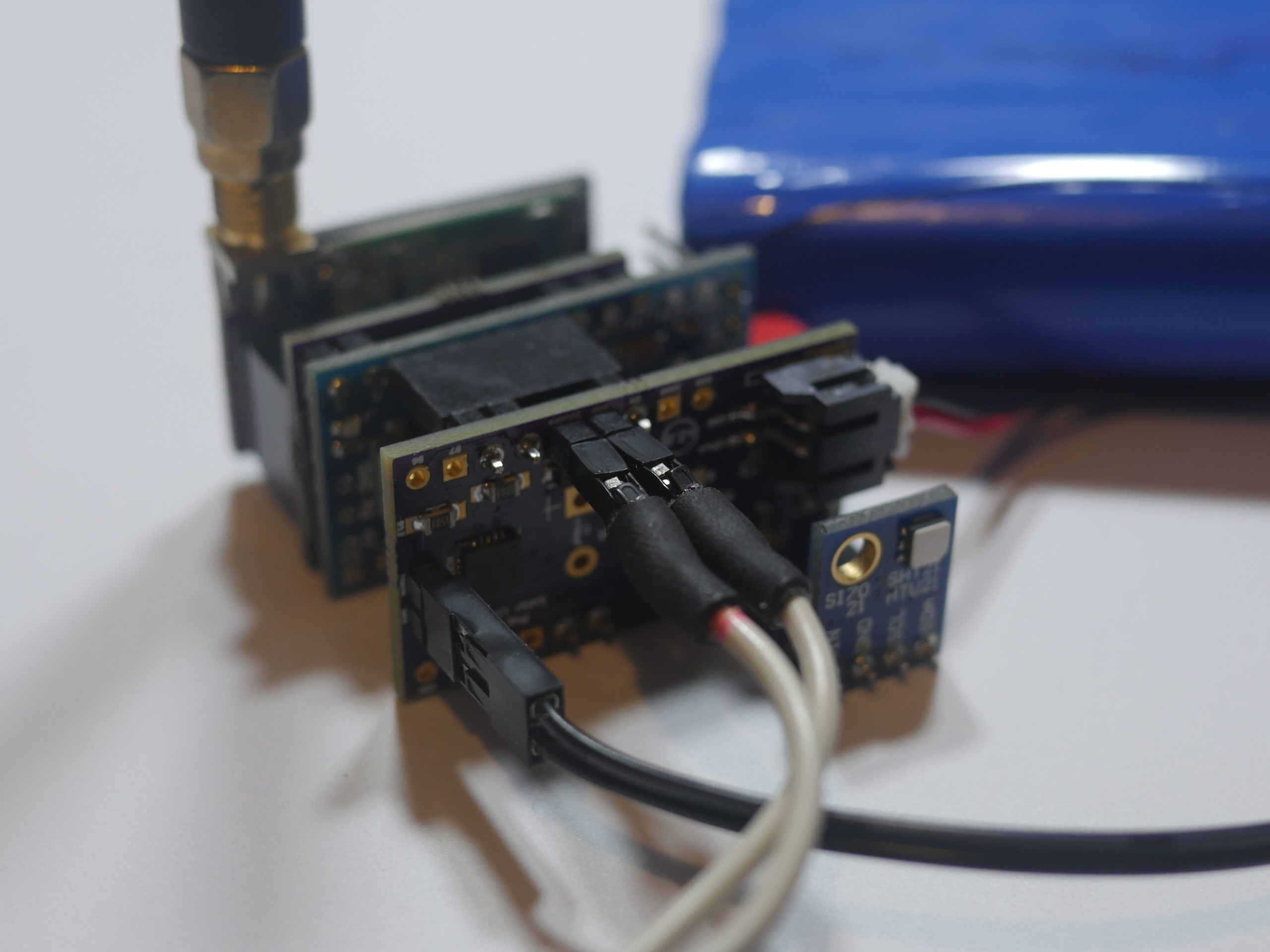
But before I ended up building my own leaning tower of PCBs-za ( - see what I did there?)
I could hear the 32-bit world calling me with its technological siren song...
Microcontrollers in this space boasted built-in radios, a tonne of other interesting peripherals, encryption and even more program memory!
So I took the red pill (or rather, a “Blue Pill”), a Nordic nRF52832, flexed my newly acquired SMD circuit design, layout and soldering skills, and…
[Queue dramatic music!]
BEHOLD!
The Pro Mini nRF52 was born.
Did I mention it has 16x the program memory of the 328p based Pro Mini you already have and are currently being confined and constrained by?!
So that's 512KB to play with instead of only 32KB - just in case you weren't paying attention.
Did I also mention it has a built-in 2.4GHz radio transceiver?! (Scratch that BLE or nRF24 radio board from your stack…)
Not to mention 128-bit AES/ECB/CCM/AAR (for encryption), 64KB RAM and 32 configurable GPIOs?! (Maybe scratch at least one more board from your stack…)
Effectively, it turned one of the above board stacks into this:
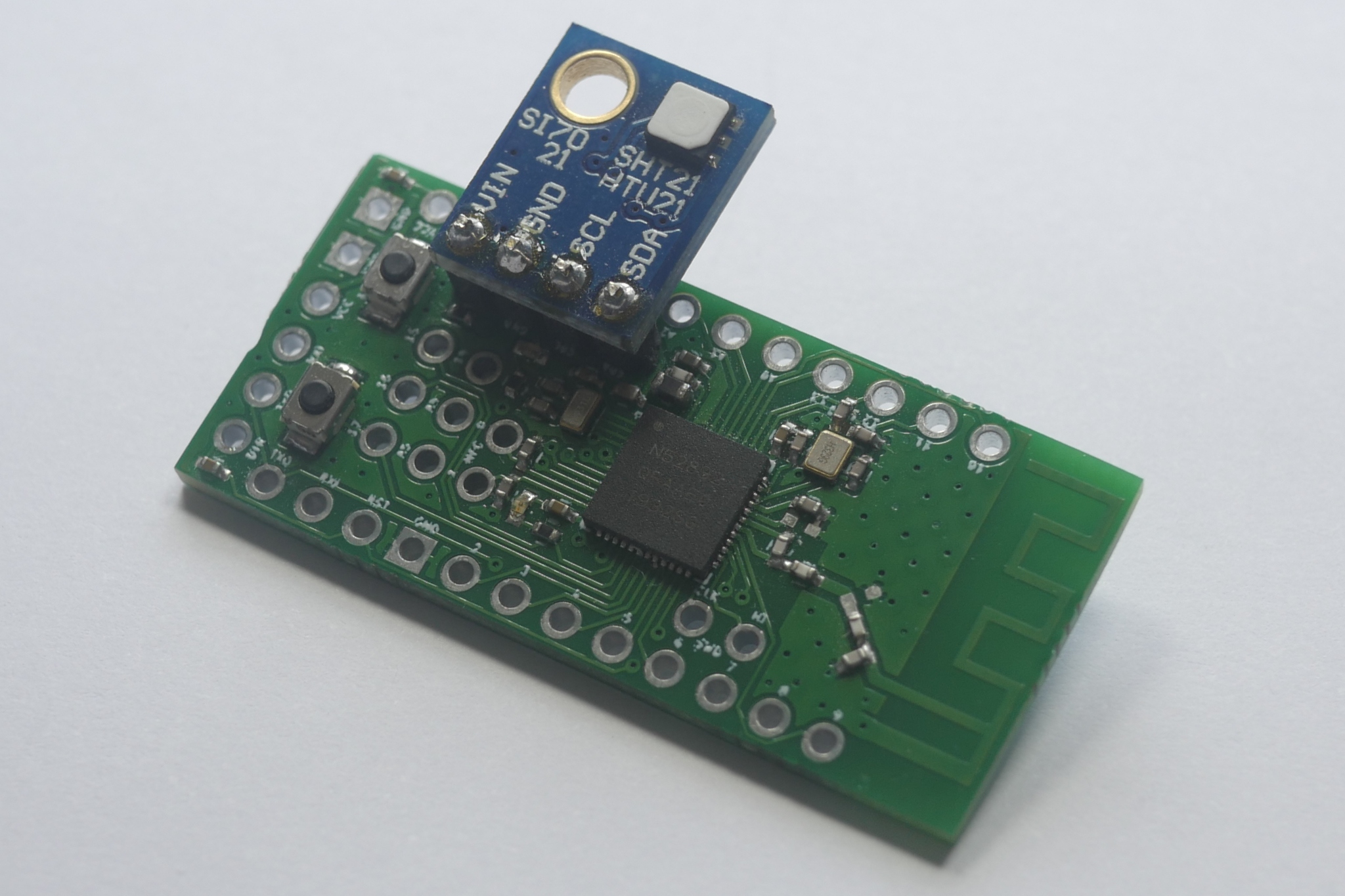
In fact, it even has a built-in calibrate-able chip temperature sensor, if you don’t mind the reduced accuracy. (The getChipTemperature() function from Matthew Ford's awesome library!)
Other notable special-ness over and above the original 8MHz 3.3v Pro Mini includes:
But wait! There’s more...
Radio Protocol Support for Bluetooth 5, Bluetooth Mesh, ANT and 2.4GHz Proprietary Stacks
Pins for NFC Antenna - Note: Does not generate a field, but can act as an NFC tag.
I2S (Inter-IC Sound) for Digital Audio (Up to 24-bit Sample Width)
64 Level Comparator
15 Level Low-Power Comparator Can also be used to wake the chip up from full 300nA (0.3uA) System OFF Mode.
SPIs support Easy DMA
3x Real Time Counters
PPI and EasyDMA allow peripherals to work autonomously without CPU intervention.
Really, what more could you ask for?!
But what does any of that actually mean for my projects?
What can I build with all this new goodness?
Well, Nordic created a custom PCB with the same nRF52832 microcontroller and developed this prototype...
Bluetooth Quadcopter Controllable From Your Phone
![]() nRF52 Quadcopter / YouTube Video / Github Source
nRF52 Quadcopter / YouTube Video / Github Source
You could do the same.
The only limitation is your imagination! (...and, well, what the chip can actually do, the caveats below and maybe the permission of your wife/parent…)
“But I love my FTDI programmer and Fiddys…”
and...
“...the world outside Arduino leaves me feeling cold and frightened!”
(Okay, maybe not quite that last one.)
There is a definite learning curve when coming from 8-Bit Atmega to 32-Bit ARM land. (And one that I’m certainly still on myself!)
Programming, bootloaders, peripherals, etc. can all be different.
But the benefits of those peripherals are also some of the reasons you’re interested in the first place, right?
That being the case, I’ve tried to ease your transition as best I can…
You can actually still use your beloved Arduino IDE and trusty FTDI programmer to program this board.
Wait, what?!
Yes.
I took a leaf out of Nordic/SparkFun/Adafruit’s books and added the ability to program using your trusty FTDI programmer.
”Look Ma! No hands!”
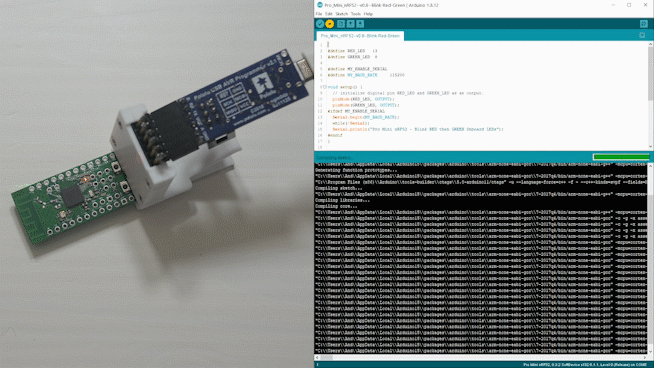
(In the above animated GIF, the red LED is flashing before the upload and then the red and yellow LEDs are flashing after the upload reprogrammed the Pro Mini nRF52.)
Just select your FTDI programmer’s COM port as normal and a custom bootloader will automatically put the board into a state where it’ll accept an upload at 115200 bps. (Full details are available in the accompanying “Getting Started Guide”.)
Now you can make use of Sandeep’s awesome nRF52 compatible Arduino library or Adafruit’s equally awesome version and you never have to leave the comfort of your favourite IDE.
But what about if your FTDI programmer can’t reach your Pro Mini nRF52 after you’ve deployed it somewhere?
No problem.
Just use Noridic’s app and upload it wirelessly!
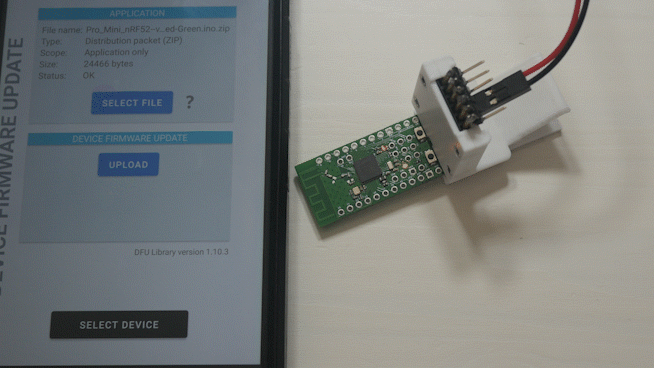
(In the above animated GIF, both the red and yellow LEDs are pulsing to show the Pro Mini nRF52 is ready to accept a DFU - Device Firmware Update - wirelessly over BLE. After the new program has been uploaded and securely verified, the Pro Mini nRF52 automatically resets and runs the new program. In this case, alternating between flashing the red and yellow LEDs.)
And if you want to get into some more serious programming and especially some custom bootloader work then I would definitely recommend getting yourself a version of the J-Link Segger and/or build a Black Magic Probe out of a Blue Pill. (If you’re interested, I could even sell you a custom ready-to-go version of the latter, just let me know…)
There are other compatible libraries too.
Like Apache’s MyNewt that will let you do some super secure BLE mesh magic like this:
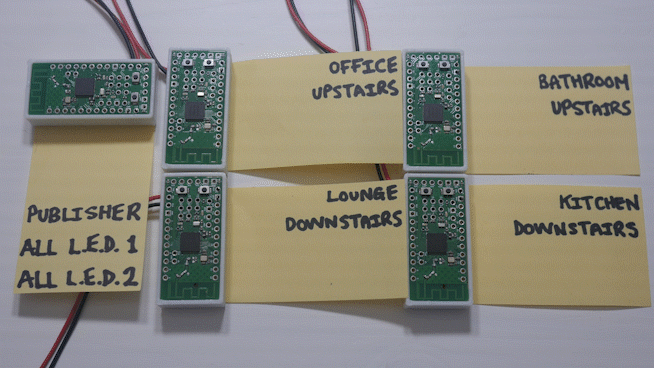
(In the above animated GIF, a 5-device BLE mesh has been already provisioned. There is a single Publisher and four Subscribers. Pushing each button on the Publisher relays that button’s message across the BLE mesh network, turning on or off the corresponding LED. Everything is secured with Network and App Keys, and can be provisioned from Nordic’s nRF Mesh or compatible app.)
It’s not going to beat the sub-200nA sleep current of the Pro Mini XL.
But I did manage to get the sub-300nA System OFF sleep suggested by Nordic’s nRF52832 datasheet - which isn’t far off - see below:
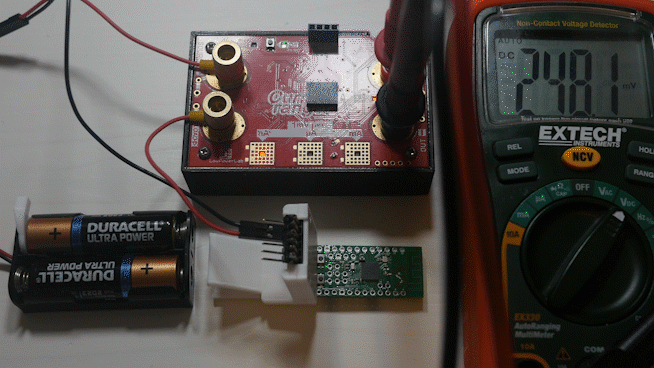
(In the above animated GIF, a Pro Mini nRF52 that is in System OFF Sleep and consuming less than 300nA, is woken up to full System ON by an external interrupt from a button press which also turns on both LEDs.)
And the sub-2µA full System ON sleep when using the RTC or external interrupts.
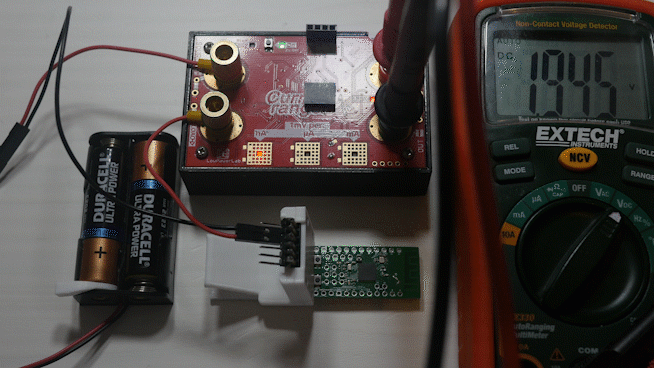
(In the above animated GIF, a Pro Mini nRF52 that is in System ON RTC Sleep and consuming less than 2µA, is woken up to full System ON by the RTC expiring which also turns on the red LED. RTC uses the onboard 32.768 kHz oscillator and can be configured from microseconds up to approx. 24 days.)
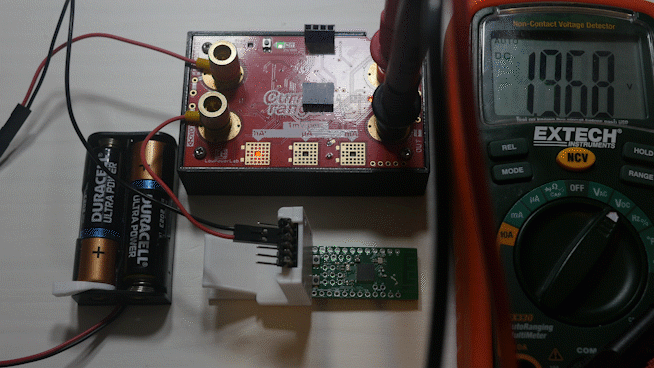
(In the above animated GIF, a Pro Mini nRF52 that is in System ON Sleep and consuming less than 2µA, is woken up to full System ON by an external interrupt from a button press which also turns on both LEDs.)
And can your 8-bit Atmega sleep at an average of less than 30µA whilst still being tethered to your phone via BLE?!
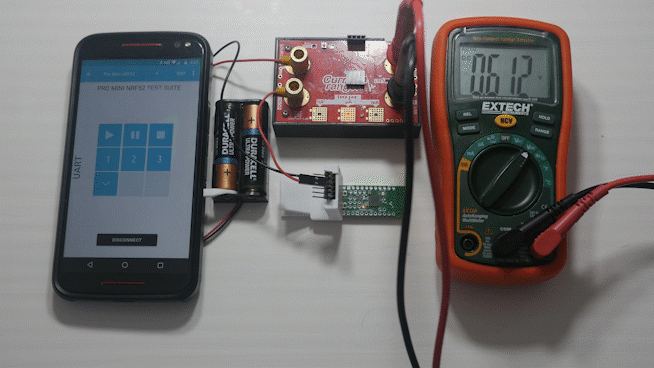
(In the above animated GIF, a Pro Mini nRF52 already tethered via Nordic’s BLE UART app, is being wirelessly controlled. Tapping the square Stop button enters the lowest power state at an average of less than 30µA whilst still maintaining a BLE connection and then tapping the triangular Play button starts the LEDs flashing.)
Not bad eh?
The more eagle-eyed among you will notice I added the DCDC componentry that enables the nRF52832 to optimize its own current draw and significantly saves power.
And with the nRF52832’s remappable pins, you no longer have to worry about where your hardware I2C, UART and SPI pins are physically - simply remap them elsewhere.
Awesome!
Yes. There is no built-in regulator on-board.
But the good news is that the chip itself accepts 1.7v to 3.6v on the VCC pin.
Simply power it from a couple of AAs, CR2477 or even a CR2032 and you’re good to go!
Wait, what? No regulator?!
Well, for this version of the board, I wanted to break-out as many pins as possible.
See that cluster of 8 pins including the bottom two for an NFC antenna?
That’s where your regulator would have been..
I mean, something's gotta give, right?
And be honest, how often are you powering your projects from a Pro Mini regulator, seriously?!
But if you really want a regulator, let me know (which one?) and I'll re-spin a version with 6 of those pins swapped out for a regulator......just for you.
Try as I might, my place-and-route fengshui was insufficient to get chip pin 5 of the nRF52832 QFN48 routed out of the rats nest of tracks and vias around it.
It’s one of the analogue input pins, but since there are 7 others available, I figured it’s not such a big deal.
Please let me know if I’m wrong though and I’ll try to take another shot at it.
To remain pin-compatible with the original Pro Mini, the I2C pins remain in their somewhat “unique” position.
You’ll also note the 8-pin grouping near the top.
Most of these pins would, I figured, be used for attaching external devices/sensors/etc. (For example, the two NFC antenna pins.)
Or they double as pins that also connect to the onboard LEDs so probably won’t be used all that often.
That being the case, they won’t line up with your breadboard, but they are still 2.54mm standard spaced.
Yes! But not FCC certified.
Alas, I can’t afford a whopping $5K to get an FCC stamp of approval.
So what’s a poor Tindie hacker to do?!
Well, what I could afford was for the good folk at Nordic Semiconductor to tune the PCB antenna for me.
They worked out the T-Match components for me to get the best performance and I simply put ‘em in!
Before tuning…
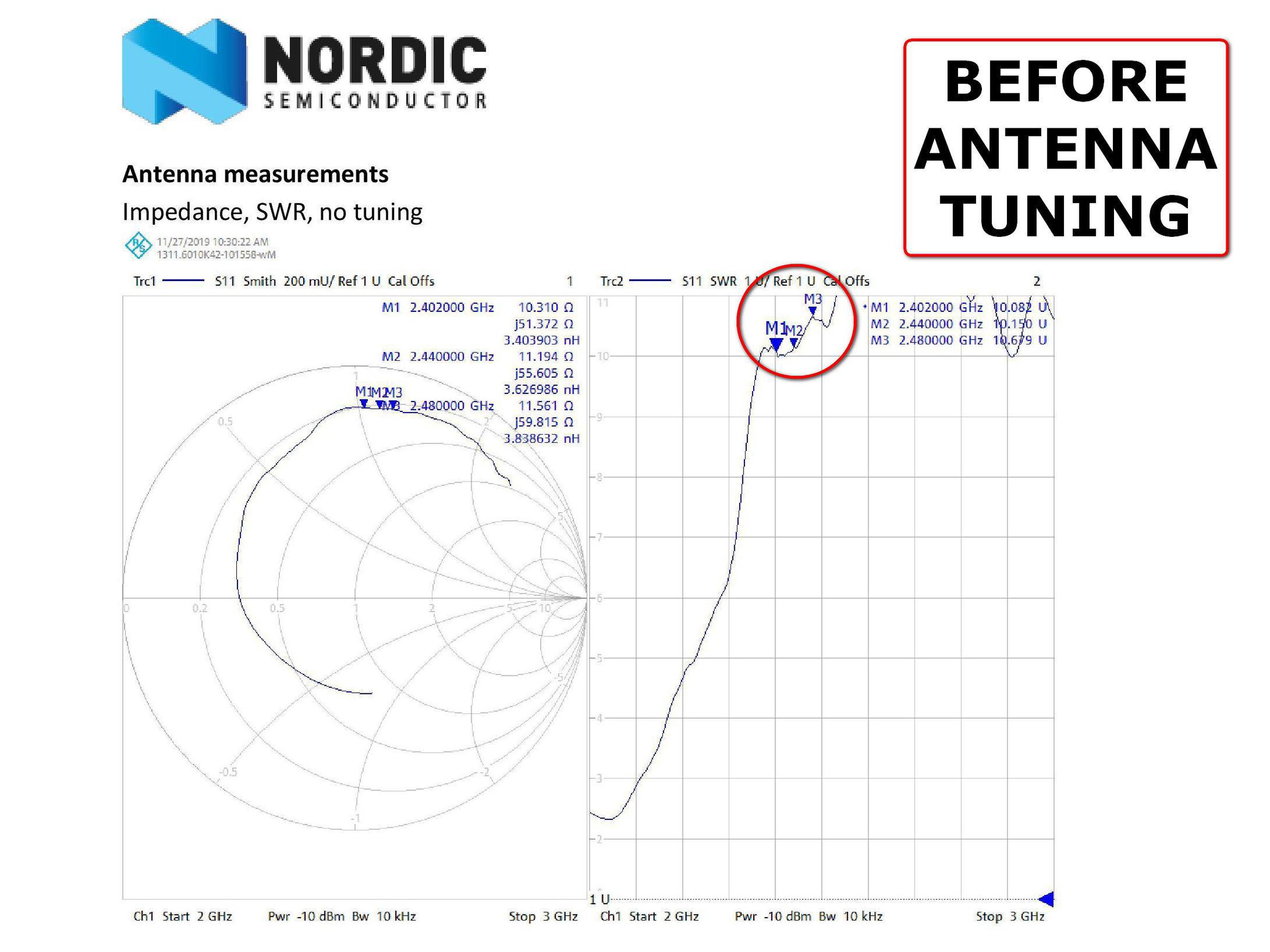
After tuning…

They also reviewed the schematic and board layout too - thanks Andreas!
So although this is a homebrew development board, it won’t be bleeding all over the RF spectrum.
This is my first time designing an RF board like this and as such it is still very much a work-in-progress.
So I’d really appreciate any constructive feedback or advice to help improve it and/or make it more useful.
But it does work!
And will arrive to you with all the pins tested by me and ready-to-roll with a custom bootloader supporting automatic FTDI uploading via the Arduino IDE and pre-loaded with a basic sketch to show off those fabulous LEDs.
Simply connect between 1.7v and 3.6v across the VCC and GND pins and the board will alternate between flashing each LED.
For more information, please see the Getting Started Guide PDF that you’ll receive upon purchase.
And finally, if you’ve come this far, perhaps you’d like to check-out my Pro Mini XL - essentially a Pro Mini with an ATmega 1284p instead of a 328p - with 4x the program memory (128KB) of the original Pro Mini (32KB) in the same space.
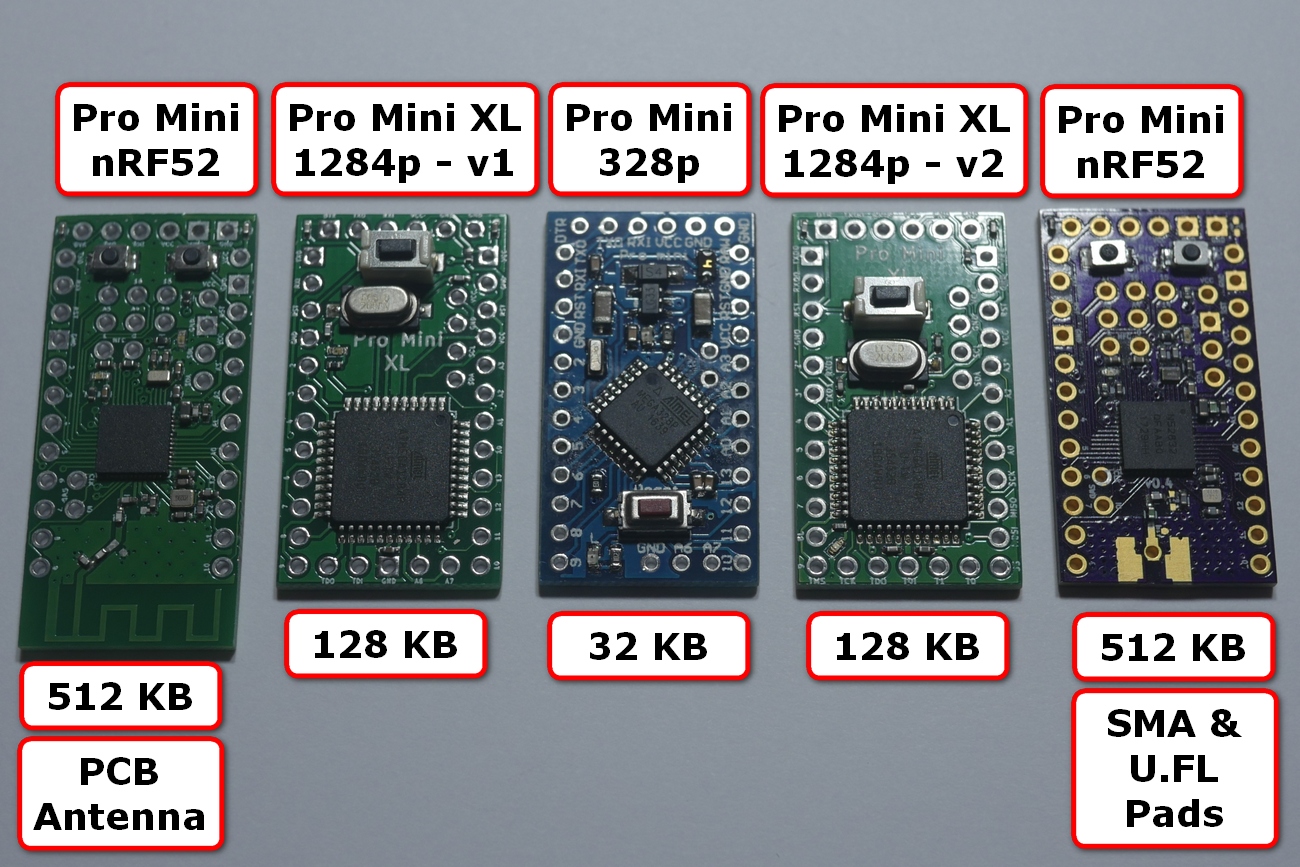
Thanks!
No country selected, please select your country to see shipping options.
No rates are available for shipping to .
Enter your email address if you'd like to be notified when Pro Mini nRF52 - Nordic nRF52832 can be shipped to you:
Thanks! We'll let you know when the seller adds shipping rates for your country.
| Shipping Rate | Tracked | Ships From | First Item | Additional Items |
|---|---|---|---|---|
|
:
|
I've recently moved from the United Kingdom to the United States, so that's where I now ship all my boards from.
I'll try my best to ship your package same-day, Monday to Friday.
Saturday and Sunday are days I reserve for spending time with my family.
Product: (5.00)
Documentation: (5.00)
Shipping: (5.00)
Communication: (5.00)
Mike | Aug. 24, 2020
No shipping info available.
Set destination country to see options
Shipping to starts at
Free shipping is available to !
Ships from
This item does not ship to .
More Info
Sign up and we'll send a reminder when the seller returns!
Durham, NC, United States of America
Ships from United States of America.
3 Reviews | 49 Orders
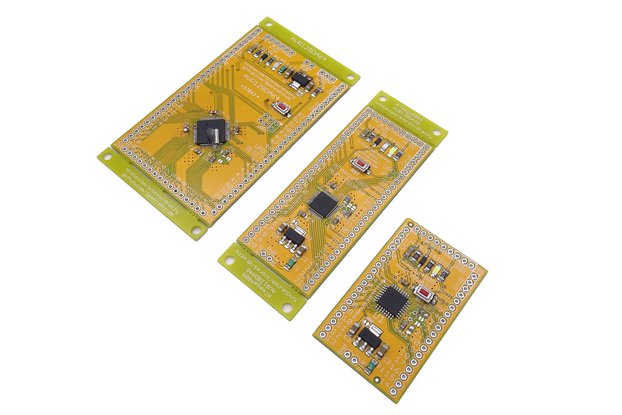
$15.00
Free Shipping!
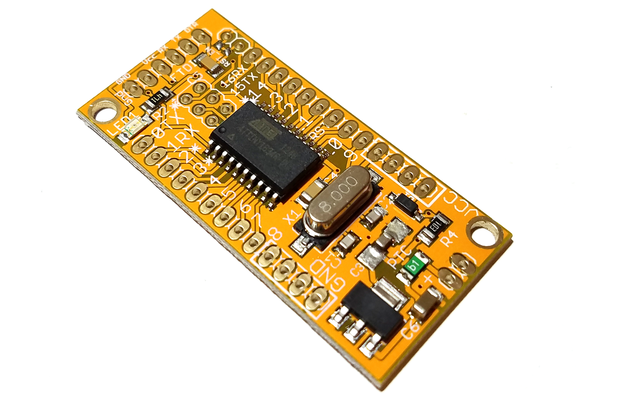
$14.95
Free Shipping!
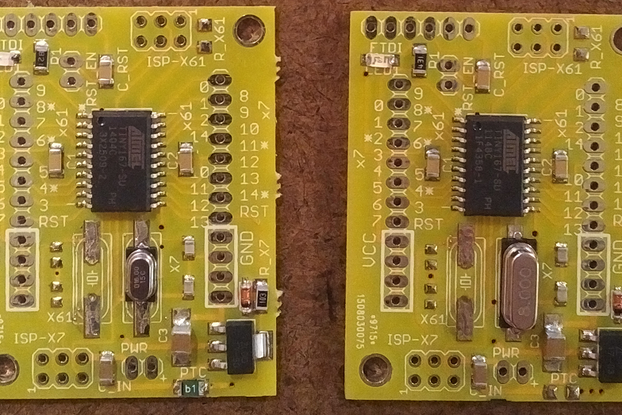
$7.50
Free Shipping!
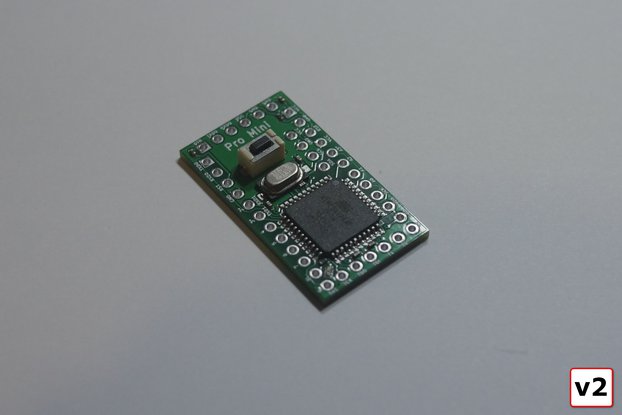
$12.50
Free Shipping!
By clicking Register, you confirm that you accept our Terms & Conditions
We recognize our top users by making them a Tindarian. Tindarians have access to secret & unreleased features.
We look for the most active & best members of the Tindie community, and invite them to join. There isn't a selection process or form to fill out. The only way to become a Tindarian is by being a nice & active member of the Tindie community!
